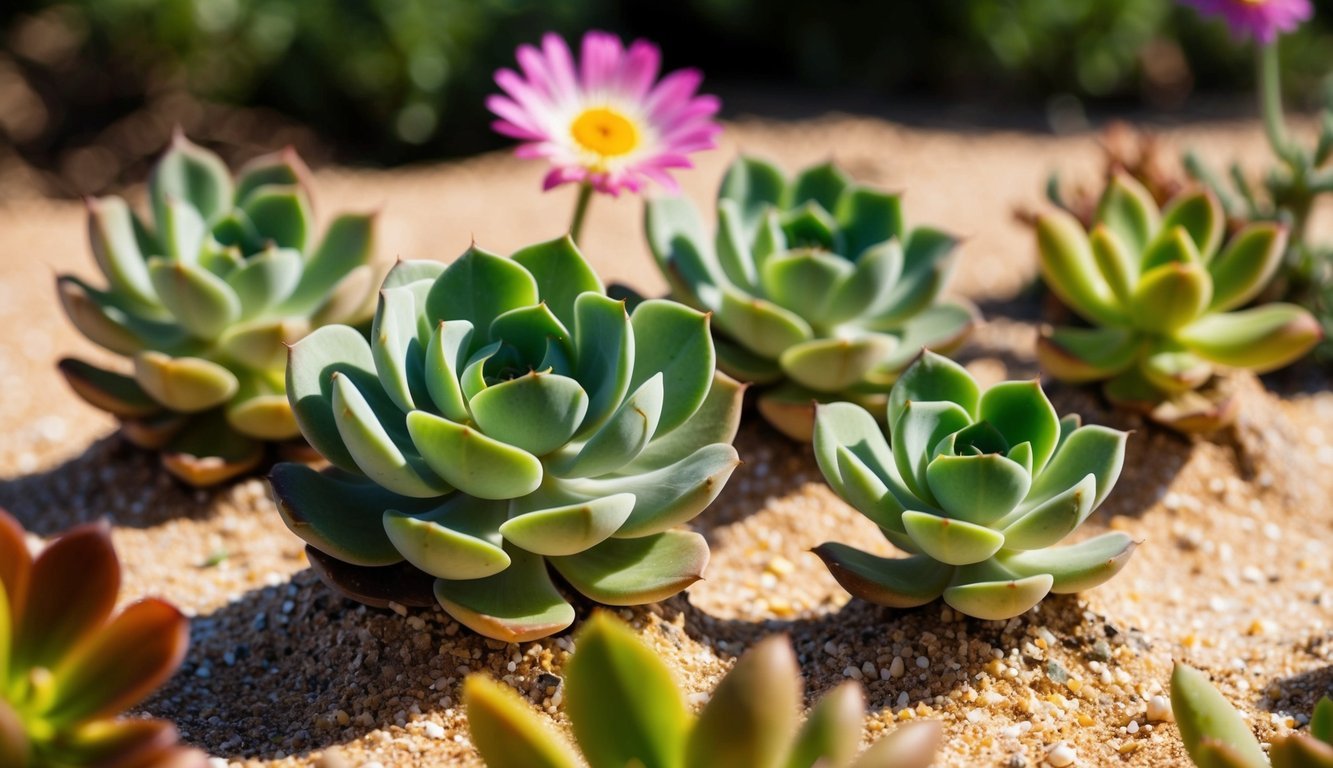
Introduction to Baby Toes Succulents
Baby toes (Fenestraria rhopalophylla), with their charming and quirky look, are a delightful choice for succulent enthusiasts.
These plants stand out thanks to their compact, club-shaped leaves that grow upright, reaching up to two inches in height and spreading over eight inches as they produce offsets.
Their unique green to gray-green foliage features translucent tips, giving them the appearance of tiny, inviting windows.
Native to the coastal deserts of Namibia and South Africa, baby toes flourish in harsh conditions, where fog and strong winds are prevalent.
They thrive in sandy, gravel-like soils that promote excellent drainage.
In their natural habitat, the leaves largely remain buried in the ground, exposing only their translucent tips to mimic pebbles, a clever adaptation to withstand fierce winds and intense sunlight.
These succulents belong to the Aizoaceae family (commonly known as fig marigolds) and are often affectionately dubbed “the window plant.”
- Common Name: Baby toes
- Plant Type: Evergreen succulent
- USDA Hardiness Zone: 9b-13b (Ideal for outdoor growth)
- Native Regions: Namibia, South Africa
- Flowering Season: Autumn through spring
- Sunlight Needs: Full sun, with some protection from extreme heat
- Soil Requirements: Cactus and succulent mix augmented with gritty material
- Preferred Soil pH: Slightly acidic to neutral (6.0-7.0)
- Time to Maturity: Around 2-5 years
- Maximum Size: Roughly 8 inches in width and 2 inches in height
- Uses: Great for ground cover, as indoor houseplants, decorative pieces, fairy gardens, or succulent arrangements
When they receive plenty of sunlight, these resilient plants can develop beautiful daisy-like flowers, typically blooming from autumn to spring in shades of white, yellow, or orangish-yellow.
If pollinated, they will produce round seed capsules.
Growing and Caring Tips
Baby toes can flourish indoors as houseplants or enhance outdoor succulent arrangements and fairy gardens.
In spaces that fall under USDA Hardiness Zones 9b to 13b, these succulents can be successfully grown year-round in pots or as ground cover, just as long as there’s well-drained soil and protection from excessive rain.
To achieve the best growth and blooming potential, baby toes benefit from a minimum of four hours of direct sunlight each day, though six hours is ideal.
When introducing new plants to intense light, it’s wise to acclimatize them gradually to prevent shock.
For optimal health, baby toes prefer a growing medium that drains well.
A blend containing 20 to 25 percent organic matter and 75 to 80 percent gritty minerals works wonders—consider mixing regular potting soil with materials like sand, pumice, or gravel.
These succulents thrive on minimal watering, so only provide moisture when the soil is completely dry.
If the leaves start to wrinkle, it’s a clear sign that the plant is running low on its water reserves, indicating it’s time for a drink.
Propagation and Maintenance
Due to their slow growth, you won’t need to repot baby toes very often.
When it’s necessary, spring is the best time to do so, and avoid repotting during their blooming phase.
You can propagate baby toes through seeds or offsets.
For seeds, scatter them onto a moist growing medium in pots or trays without burying them, then keep them in a humid environment until they germinate.
To propagate via offsets, gently remove them from the parent plant and allow the cut ends to callus before potting and watering.
Generally, baby toes are quite resistant to pests and diseases.
However, it’s still crucial to keep an eye out for root mealies and potential rot from overly damp soil conditions.
To keep your baby toes thriving, prioritize well-draining soil, adequate sunlight, and let the soil dry completely between watering sessions!
Source: Gardenerspath.com

